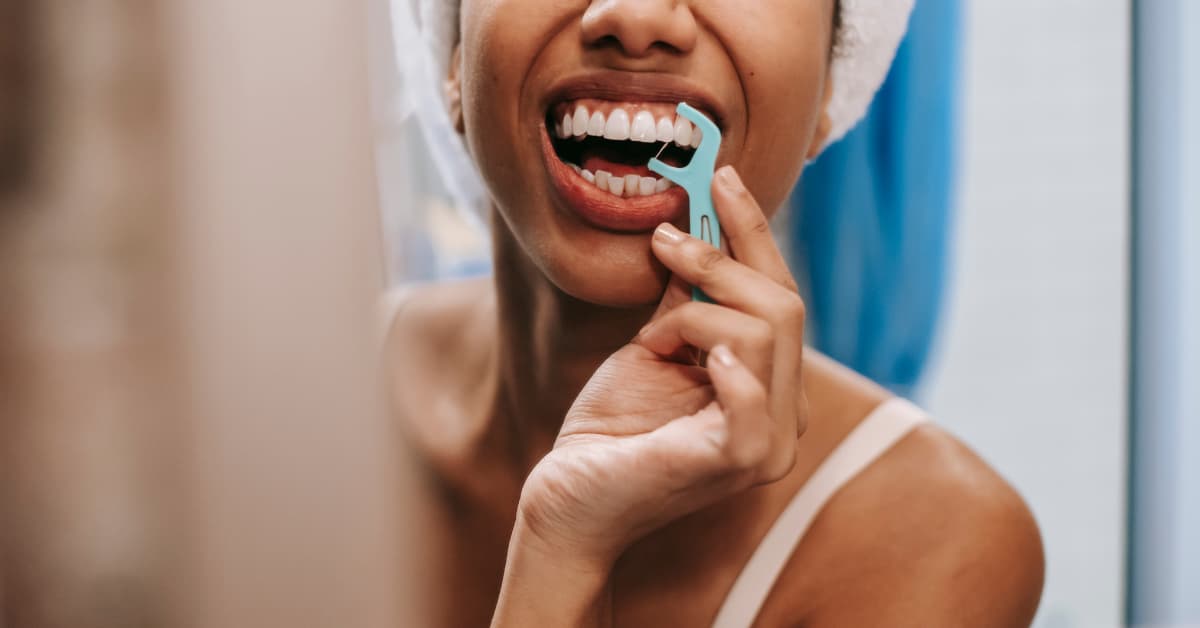Gingivitis Self-Care: What Actually Works (And When to See a Dentist)
Stop ignoring those bleeding gums when you brush. Stop accepting swollen, tender tissue as “normal aging.” Stop telling yourself it will get better on its own.
What if I told you that everything you think you know about gingivitis self-care is wrong? What if the solution isn’t more expensive treatments, but simpler, more consistent action?
Here’s the truth your dentist might not emphasize: Gingivitis self-care isn’t about perfection – it’s about precision.
As someone who has guided thousands of patients through gum disease reversal over my two decades at Comprehensive Dental Care, I’ve witnessed transformations that seem almost miraculous, not because of advanced technology or expensive procedures, but because patients finally understood what gingivitis self-care actually requires.
What is the difference between success and failure? Understanding that your gums aren’t betraying you – they’re communicating with you.
The Foundation of Effective Gingivitis Self-Care
Gingivitis self-care begins with acceptance of one fundamental truth: your body wants to heal itself. Your body is designed to heal itself. Your body will heal itself when you create the right conditions.
But here’s what most people misunderstand about gingivitis self-care – it’s not about attacking the problem harder. It’s about removing the obstacles to your body’s natural healing response.
Gingivitis self-care is systematic. Gingivitis self-care is strategic. Gingivitis self-care is surprisingly simple when you understand the underlying principles.
I’ve seen patients reverse months of inflammation in two weeks. I’ve watched chronic bleeding stop in days. I’ve observed swollen, angry gums return to healthy pink tissue through nothing more than proper gingivitis self-care techniques.
The pattern is always the same: remove the bacterial irritants, support the healing process, and maintain the results.
What Is Gingivitis and Why Self-Care Changes Everything
Gingivitis is your immune system’s red flag. When bacteria accumulate along your gum line, your body responds with inflammation – the swelling, redness, and bleeding you notice during brushing or flossing.
Unlike its more serious progression, periodontitis, gingivitis hasn’t caused permanent damage to the tissues and bone supporting your teeth. This is your window. This is your opportunity. This is when gingivitis self-care can completely reverse the condition.
But that window doesn’t stay open forever.
The Hidden Price of Delayed Action
What begins as minor gum bleeding escalates predictably:
- Stage 1: Occasional bleeding during brushing
- Stage 2: Persistent inflammation and bad breath
- Stage 3: Gum recession and tooth sensitivity
- Stage 4: Periodontal disease requiring professional intervention
- Final Stage: Tooth loss and expensive restoration procedures
The cost difference? Twenty dollars in gingivitis self-care supplies versus thousands in periodontal therapy. The time difference? Ten minutes daily versus hours in the dental chair. The outcome difference? Prevention versus restoration.
The Complete Three-Phase Gingivitis Self-Care System
After treating countless cases of gingivitis, I’ve identified the complete gingivitis self-care system that works. This isn’t about adding complexity to your routine – it’s about implementing the right techniques in the correct sequence with proper timing.
The Three-Phase Gingivitis Self-Care Protocol
Phase 1: Bacterial Disruption (Days 1-5)
Your primary objective is disrupting the bacterial biofilm that’s triggering your immune response. Most people approach this incorrectly – they brush harder, scrub longer, and use stronger products. This damages healthy tissue and drives bacteria deeper into gum pockets.
The correct approach focuses on technique over force:
The Two-Minute Precision Method:
- Position your soft-bristled brush at a 45-degree angle to the gum line
- Use gentle, circular motions rather than aggressive back-and-forth scrubbing
- Spend 30 seconds in each quadrant of your mouth
- Focus on the gum line where bacteria accumulate, not just tooth surfaces
The Strategic Flossing Protocol:
- Use 18 inches of floss, wrapping the ends around your middle fingers
- Form a C-shape around each tooth, gently sliding below the gum line
- Use a clean section of floss for each tooth to avoid spreading bacteria
- Move the floss up and down against the tooth surface, not just in and out
Antimicrobial Integration:
- Rinse after flossing and brushing, not before
- Swish therapeutic mouthwash for 30 seconds minimum
- Avoid rinsing with water afterward – let the active ingredients work
Phase 2: Healing Optimization (Days 6-21)
During this phase, you’re not just removing bacteria – you’re creating optimal conditions for tissue repair and immune system recovery.
Advanced Cleaning Techniques:
Interdental brush integration – These tiny brushes access spaces where traditional floss cannot reach effectively. Use different sizes based on the gaps between your teeth. Insert gently, rotate twice, and remove.
Water flossing supplementation – Pulsating water pressure dislodges bacteria from deeper pockets. Use after traditional flossing, not as a replacement. Adjust pressure to comfort – effectiveness comes from consistency, not intensity.
Oil pulling implementation – Swish coconut oil for 10-15 minutes before brushing. The oil binds to bacteria, making mechanical removal more effective. This ancient technique has modern research supporting its antimicrobial properties.
Nutritional Support Protocol:
- Vitamin C supplementation – 500mg daily supports collagen synthesis and immune function
- Omega-3 fatty acids – 1000mg daily reduces systemic inflammation
- Antioxidant-rich foods – blueberries, green tea, dark leafy greens protect against cellular damage
- Sugar limitation – bacteria metabolize sugars into acids that worsen inflammation
Phase 3: Long-Term Maintenance (Day 22 and Beyond)
The true test of gingivitis self-care isn’t initial improvement – it’s preventing recurrence through sustainable daily habits.
The Optimized Daily Routine:
Morning Protocol (6 minutes):
- Rinse with warm water to activate saliva production (30 seconds)
- Oil pulling with coconut oil (optional, 10 minutes)
- Brush with fluoride toothpaste using a precision technique (2 minutes)
- Floss thoroughly with proper C-curve technique (2 minutes)
- Rinse with antimicrobial mouthwash (30 seconds)
Evening Protocol (8 minutes):
- Remove food particles with a water rinse (30 seconds)
- Floss first to loosen debris (2.5 minutes)
- Brush with gum-line focus (2.5 minutes)
- Interdental brush for problem areas (1 minute)
- Final therapeutic mouthwash rinse (30 seconds)
Weekly Maintenance Tasks:
- Replace the toothbrush or brush head monthly
- Deep clean interdental brushes with antibacterial solution
- Self-examine gums for color, texture, and bleeding changes
- Assess technique effectiveness and adjust as needed
The Complete Gingivitis Self-Care Toolkit
Essential Foundation (Under $30):
- Soft-bristled toothbrush – manual or electric, replaced every 3 months
- Fluoride toothpaste – ADA-accepted formula with stannous fluoride preferred
- Dental floss – waxed variety for easier insertion, unwaxed for better cleaning
- Therapeutic mouthwash – containing cetylpyridinium chloride or essential oils
Advanced Enhancement Options:
- Electric toothbrush – removes 21% more plaque than manual brushing
- Water flosser – supplements but never replaces traditional floss
- Interdental brushes – multiple sizes for customized cleaning
- Tongue scraper – removes bacteria that contribute to gum inflammation
- Coconut oil – organic, unrefined for oil pulling protocol
When Gingivitis Self-Care Requires Professional Support
Even the most comprehensive gingivitis self-care approach has limitations. Recognizing these boundaries prevents minor issues from becoming major problems.
Immediate professional consultation indicators:
- Bleeding that persists after 14 days of proper technique
- Gums that appear to be pulling away from teeth
- Persistent bad breath despite improved oral hygiene
- Changes in tooth position or bite alignment
- Pus formation between teeth and gums
- Pain that worsens rather than improves
Why some cases exceed self-care capacity: Sometimes, bacterial accumulation has progressed beyond what surface cleaning can address. Calculus (hardened plaque) requires professional removal. Deep pocket formation needs specialized instruments. Systemic health conditions can impair the healing response.
There’s no shame in needing professional intervention – there’s only wisdom in recognizing when you’ve reached the effective limits of gingivitis self-care.
Common Gingivitis Self-Care Mistakes That Sabotage Results
After two decades of treating gum disease, I observe the same mistakes repeatedly. Avoiding these pitfalls accelerates your healing timeline:
Critical Error #1: Technique Over Intensity – Aggressive brushing traumatizes gum tissue and forces bacteria deeper into pockets. Gentle, thorough technique with quality tools surpasses forceful scrubbing every time. Think precision, not pressure.
Critical Error #2: Consistency Over Perfection – Skipping a single day allows bacterial recolonization and inflammatory response reactivation. Gingivitis self-care demands an unwavering daily commitment. Better to maintain adequate technique consistently than perfect technique sporadically.
Critical Error #3: Gum Line Over Tooth Surfaces – Most people clean their teeth effectively, but neglect their gums. The bacterial accumulation occurs at the gum line, not the middle of the tooth. Redirect your focus to where the problem actually exists.
Critical Error #4: Timeline Over Expectations – Tissue healing requires time. Initial bleeding reduction occurs within 7-10 days, but complete healing takes 4-6 weeks minimum. Premature evaluation leads to technique abandonment before results manifest.
Critical Error #5: Maintenance Over Improvement – Many people stop their gingivitis self-care routine when bleeding ceases. Bleeding cessation indicates improvement beginning, not healing completion. Continue the full protocol to prevent recurrence.
Your 30-Day Gingivitis Self-Care Action Plan
Now you understand the complete gingivitis self-care system. Now you have the tools for transformation. Now you possess the knowledge that thousands of my patients have used to reclaim their oral health.
But knowledge without implementation changes nothing. Tools without technique accomplish nothing. Understanding without action produces nothing.
Your gums are resilient. Your gums are responsive. Your gums are waiting for you to provide what they need to heal.
The patients who succeed with gingivitis self-care share common characteristics: they start immediately, they maintain consistency, they trust the process, they commit to the timeline, and they adjust their technique based on results.
Week 1: Foundation Implementation
- Day 1: Purchase all essential supplies and establish a baseline gum condition
- Days 2-3: Master proper brushing technique with a timer and mirror feedback
- Days 4-7: Integrate daily flossing with correct C-curve methodology
Week 2: Technique Refinement
- Days 8-10: Add therapeutic mouthwash to morning and evening routines
- Days 11-14: Optimize timing and sequence for maximum effectiveness
Week 3: Advanced Integration
- Days 15-18: Introduce interdental brushes for enhanced cleaning
- Days 19-21: Add nutritional support and oil pulling if desired
Week 4: Habit Solidification
- Days 22-25: Fine-tune routine based on gum response and comfort
- Days 26-30: Establish long-term maintenance schedule and assessment protocol
Beyond 30 Days: Lifelong Prevention – Your gingivitis self-care routine becomes automatic. Your gums remain healthy. Your confidence increases. Your dental visits become routine maintenance rather than problem-solving.
Start Your Gingivitis Self-Care Journey Today
Two paths extend before you.
Path One: Continue accepting bleeding gums as normal. Continue hoping the problem resolves itself. Continue risking progression to irreversible periodontal disease. Continue facing expensive treatments and potential tooth loss.
Path Two: Implement comprehensive gingivitis self-care starting today. Commit to the proven system. Trust your body’s healing capacity. Invest ten minutes daily to prevent hours of dental procedures.
The difference between these paths isn’t knowledge – you now possess complete understanding of effective gingivitis self-care. The difference isn’t resources – the entire system costs less than a single professional cleaning. The difference isn’t time – maintenance requires less time than treatment.
The difference is in the decision.
Your gums have been sending signals. Your body has been requesting help. Your health has been waiting for your response.
Gingivitis self-care isn’t complicated – it’s systematic. It isn’t expensive – it’s economical. It isn’t time-consuming – it’s time-saving.
If you’re experiencing persistent bleeding, gum recession, or have questions about implementing this gingivitis self-care system, professional guidance can accelerate your results. Contact Comprehensive Dental Care today to schedule a consultation and create a personalized approach that combines effective self-care with expert oversight!
Start your gingivitis self-care transformation now. Your future self will thank you.



